The Well-Tempered Ear
Today is Veterans Day. Here is some appropriate music by Beethoven to mark it. Can you guess which piece? What composer or music would you choose?
1 Comment
PLEASE HELP THE EAR. IF YOU LIKE A CERTAIN BLOG POST, SPREAD THE WORD. FORWARD A LINK TO IT OR, SHARE IT or TAG IT (not just “Like” it) ON FACEBOOK. Performers can use the extra exposure to draw potential audience members to an event. And you might even attract new readers and subscribers to the blog.
By Jacob Stockinger
Today – Wednesday, Nov. 11, 2020 – is Veterans Day.
It started out as Armistice Day in 1918 when the end of World War I was declared to take place on the 11th hour of the 11th day of the 11th month.
It is a day to mark the service of all veterans – not just those who died in the line of duty, as is celebrated on Memorial Day.
You can find a lot of choice of classical music to play for Veterans Day. Here is one link to a compilation that features patriotic songs and marches: https://www.youtube.com/watch?v=BJepYzH1VUY
But The Ear settled on Beethoven (below, in an 1815 portrait by Joseph Willebrord Maehler).
Can you guess which piece?
It is not the memorable funeral marches on the Piano Sonata in A-Flat, Op. 26, or the Symphony No. 3 “Eroica.”
It is also not the “Sacred Hymn of Thanksgiving” in the String Quartet, Op. 132.
And it is not “Wellington’s Victory” or the “Egmont” Overture or the Piano Concerto No. 5 “Emperor” with its triumphant fast movements.
Instead it is the second movement of the Symphony No. 7 in A Major, Op. 92. (You can hear it see it represented graphically in the YouTube video at the bottom.)
That is the very well known Allegretto movement with its repetitious and almost hypnotizing, soaring theme. It seems like a funeral march, full of introspection, poignancy and sadness, that is a bit brisker and more lyrical than usual.
It is so popular, in fact, that it has been used as a soundtrack in many movies, including “The King’s Speech” and has inspired works based on it including the “Fantasia on an Ostinato” by the contemporary American composer John Corigliano.
If it seems an unexpected choice, you just need to know more about its history.
It was composed 1811-1812, and Beethoven correctly considered it one of his finest works. So did Richard Wagner who famously described as the “apotheosis of the dance” for the infectious rhythms throughout the symphony.
At its premiere in Vienna, in his introductory remarks Beethoven said: “We are moved by nothing but pure patriotism and the joyful sacrifice of our powers for those who have sacrificed so much for us.”
Beethoven (below, in 1815 as depicted in a paining the Joseph Willibrord Maehler) premiered the symphony at a charity concert in 1813 to help raise money for the Austrian and Bavarian soldiers who had been wounded at the Battle of Hanau while fighting against France during the Napoleonic Wars.
It was so popular with the first performance that the audience demanded and received an immediate encore performance of the second movement.
Here is a Wikipedia link to the history of the symphony: https://en.wikipedia.org/wiki/Symphony_No._7_(Beethoven)
To this day, the Seventh Symphony, so charged with energy, remains for many people, conductors and orchestral players their favorite Beethoven symphony.
It is ironic that Leonard Bernstein (below, in a photo by Paul de Hueck) performed the Seventh Symphony at the last concert he ever conducted – at the Tanglewood Festival in August 1990. He took the second movement at a slower-than-usual tempo and many have criticized Bernstein, who was in terrible health, and have suggested that he was using it as a funeral march or homage for himself.
They may be right. But in retrospect the choice of Bernstein – who died two months later — finds a certain justification in the original motive for the entire symphony and especially the second movement.
Listen for yourself.
Then tell us what you think.
Does this movement justify it being played on Veterans Day?
What music would you choose to mark the day?
What do you think of the Symphony No. 7 in general and the second movement in particular?
The Ear wants to hear.
Tags: #ArmisticeDay, #BlogPost, #BlogPosting, #EgmontOverture, #EmperorConcerto, #EroicaSymphony, #FacebookPost, #FacebookPosting, #FantasiaonanOstinato, #FilmSoundtrack, #FuneralMarch, #HealthEmergency, #JacobStockinger, #JohnCorigliano, #LeonardBernstein, #LivingComposer, #LudwigVanBeethoven, #MemorialDay, #MovieSoundtrack, #MusicCritic, #NapoleonicWars, #NewMusic, #OperaMusic, #OrchestralPlayers, #PianoConcerto, #PianoMusic, #PianoSonata, #RichardWagner, #SacredHymnofThanksgiving, #SeventhSymphony, #SlowMovement, #StringQuartet, #TanglewoodFestival, #TanglewoodMusicCenter, #TheEar, #TheKing'sSpeech, #VeteransDay, #ViennaAustria, #VisualArt, #Wellington'sVictory, #Wikipediaentry, #WorldWarI, #YouTubevideo, 1918, Allegretto, apotheosis, appropriate, Armistice Day, Arts, audience, Austria, Austrian, battle, Bavaria, Bavarian, Beethoven, Bernstein, blog, brisk, celebrate, Chamber music, choice, choose, Classical music, compendium, compilation, composer, Concert, concerto, conductor, Corigliano, critic, criticize, dance, day, dead, death, declare, describe, duty, Egmont Overture, Emperor Concerto, encore, end, energy, Eroica, Eroica Symphony, Facebook, Fantasia, Fantasia on an Ostinato, fight, film soundtrack, forward, France, French, funeral march, graphic, graphically, guess, Hanau, Health, help, History, hour, hymn, hypnotizing, immediate, infectious, introspection, ironic, Jacob Stockinger, John Corigliano, joyful, know, Leonard Bernstein, like, link, listen, Living composer, Ludwig van Beethoven, lyrical, march, mark, melody, Memorial Day, month, movement, movie, Movies, Music, Napoleon, Napoleonic, Napoleonic Wars, need, New Music, opera, Orchestra, orchestral, orchestral players, ostinato, Overture, patriotic, patriotism, peace, People, performance, Piano, Piano concerto, piano music, Piano sonata, piece, play, player, poignancy, popular, post, posting, pure, repetitious], represent, rhythm, Richard Wagner, sacred, Sacred Hymn of Thanksgiving, sacrifice, sadness, said, say, schematic, service, Seventh Symphony, share, sing, slow, Slow movement, soldiers, Sonata, song, songs, soul, soulful, soundtrack, String quartet, subscriber, suggest, symphony, tag, Tanglewood Festival, Tanglewood Music Center, Tempo, terrible, Thanksgiving, The Ear, The King's Speech, theme, think, today, triumph, triumphant, truce, unexpected, United States, usual, Veteran, Veterans Day, victory, Vienna, visual schematic, Wagner, war, Wednesday, Wellington, Wellington's Victory, Wikipedia, work, World War I, wound, wounded, YouTube, YouTube video
Classical music: This weekend, the Madison Symphony Orchestra celebrates the legacy and works of Leonard Bernstein
Leave a Comment
IF YOU LIKE A CERTAIN BLOG POST, PLEASE FORWARD A LINK TO IT OR SHARE IT (not just “Like” it) ON FACEBOOK. Performers can use the extra exposure to draw potential audience members to an event.
By Jacob Stockinger
This coming weekend, Leonard Bernstein (below, in a photo by Jack Mitchell) will be remembered, honored and celebrated by his friend and Madison Symphony Orchestra music director John DeMain in a “Remembering Lenny” concert that explores Bernstein’s musical contributions as an American composer and conductor.
Original works by Bernstein will be performed by the MSO on the first half of the concert. The MSO starts with the Overture to Candide, then moves on to On The Town, and, finally, performs his Symphony No. 2 “The Age of Anxiety,” featuring Van Cliburn Competition bronze medal winner and UW-Madison pianist Christopher Taylor.
The second half of the program features Ludwig van Beethoven’s Symphony No. 7, the last work that Bernstein (1918-1990) ever conducted during a concert at the summer Tanglewood Festival of the Boston Symphony Orchestra.
Performances will be held in Overture Hall, 201 State Street, on this Friday night, Nov. 9, at 7:30 p.m.; this Saturday night, Nov. 10, at 8 p.m.; and this Sunday afternoon, Nov. 11, at 2:30 p.m. Ticket information is below.
Says DeMain (below, in a photo by Greg Anderson): “To have my 25th anniversary with the MSO coincide with the 100th anniversary of Leonard Bernstein’s birth is special for me personally because of the unique opportunities I had to work with this great American musician.”
DeMain, who premiered Bernstein’s opera “A Quiet Place” in Houston, adds: “The first half of the concert celebrates Lenny the composer, culminating in the first performance by the MSO of his second symphony, The Age of Anxiety, which has a dazzling and at times jazzy part for the piano, and carries with it, still, a timely social statement. Christopher Taylor (below), a Madison favorite with whom I have often enjoyed collaborating, will perform the challenging and exciting piano part.”
DeMain describes the final work in the program: “The second half of the concert pays tribute to Lenny the conductor, and his life-long love of Beethoven. Since the Symphony No. 7 in A Major, Op. 92, was the last piece Lenny conducted, I thought it would be the perfect way to celebrate Lenny and his great contribution to American musical life.” (NOTE: You can hear Bernstein conduct the famous second movement of Beethoven’s Symphony No. 7 during his last public performance, just two months before he died, in the YouTube video at the bottom.)
Here is some more background:
Bernstein’s operetta Candide is based on the 1759 novella by French philosopher Voltaire. The well-known Overture is quick-paced, with a feverish excitement that begins from the first breath of sound. Many of the meters are in seven beats, or of other non-traditional types, and quickly change. Each player of the ensemble is required to perform with simultaneously the utmost virtuosity and togetherness.
On the Town is a dance-centric musical scored by Leonard Bernstein based on Jerome Robbins’ idea for the 1944 ballet “Fancy Free.” The story depicts three American sailors on a 24-hour shore leave in New York City during wartime, where each man meets and quickly connects with the woman of their dreams. The musical is the source of the ubiquitously popular show tune New York, New York.
The Age of Anxiety was composed between 1948 and 1949, and is inspired by a poem of the same name by W.H. Auden (below). The 80-page poem follows four lonely strangers who meet in a wartime New York bar and spend the evening ruminating on their lives and the human condition. Subtitled “a baroque eclogue” (a pastoral poem in dialogue form), the characters speak mostly in long soliloquies of alliterative tetrameter, with little distinction among the individual voices.
Composed from 1811–1812, Beethoven’s Symphony No. 7 premiered with Beethoven (below) himself conducting in Vienna on December 8, 1813 at a charity concert for soldiers wounded in the Battle of Hanau.
The symphony’s dance elements, vitality and sense of celebration are conveyed principally through rhythm. It is not the melodies that are so striking and memorable as the general sense of forward movement.
The Overture lobby opens 90 minutes prior to each concert. One hour before each performance, Randal Swiggum (below) will lead a 30-minute Prelude Discussion in Overture Hall to enhance concertgoers’ understanding and listening experience. It is free to ticket holders.
The MSO recommends that concert attendees arrive EARLY for each performance to make sure they have time to pass through Overture Center’s security stations, and so they can experience the Prelude Discussion.
Program notes for the concerts are available online. Go to: http://bit.ly/nov2018programnotes
Tickets can be purchased in the following ways:
- Single Tickets are $18-$93 each and are on sale now at: https://madisonsymphony.org/bernstein\through the Overture Center Box Office at 201 State Street, or by calling the Box Office at (608) 258-4141. Fees apply to online/phone sales.
- Groups of 10 or more can save 25% by calling the MSO office at (608) 257-3734. For more information, visit, https://www.madisonsymphony.org/groups.
- Student rush tickets can be purchased in person on the day of the concert at the Overture Center Box Office at 201 State Street. Students must show a valid student ID and can receive up to two $15 or $20 tickets. More information is at: https://www.madisonsymphony.org/studentrush
- Seniors age 62 and up receive 20% savings on advance and day-of-concert ticket purchases in select areas of the hall.
- Subscribers to 5 or more symphony subscription concerts can save up to 50% off single ticket prices. More information is available about the season at: https://madisonsymphony.org/18-19
- Flex-Ticket booklets of 10 vouchers for 2018-19 symphony subscription concerts are available. Learn more at: https://madisonsymphony.org/flex
Discounted seats are subject to availability, and discounts may not be combined.
Find more information at madisonsymphony.org
The Presenting Sponsor for the November concerts is Steinhauer Charitable Trust. Underwriting for Christopher Taylor is provided by Sharon Stark, “to Peter Livingston with love.” Major funding is provided by: Stephen D. Morton, The Gialamas Company, Inc., Myrna Larson, Madison Symphony Orchestra League, and Nancy Mohs. Additional funding is provided by Robert Benjamin and John Fields, Godfrey & Kahn, S.C., and Wisconsin Arts Board, with funds from the State of Wisconsin and the National Endowment for the Arts.
Tags: #AgeofAnxiety, #AmericanComposer, #Americanconductor, #AmericanMusician, #AQuietPlace, #BattleofHanau, #BlogPost, #BlogPosting, #BostonSymphony, #BoxOffice, #BrassSection, #CandideOpera, #CharityConcert, #ChristopherTaylor, #FacebookPost, #FirstPerformance, #GialamasCompany, #Godfrey&Kahn, #HoustonTexas, #JazzMusic, #JeromeRobbins, #JohnDeMain, #LastPerformance, #LeonardBernstein, #LudwigVanBeethoven, #MadisonSymphonyOrchestra, #NationalEndowmentfortheArts, #NewYorkCity, #NewYorkNewYork, #OntheTown, #OriginalWork, #OvertureCenter, #OvertureHall, #OverturetoCandide, #PastoralPoem, #PercussionSection, #PreludeDiscussion, #ProgramNotes, #RandalSwiggum, #SeasonSubscriber, #SeniorCitizen, #ShowTune, #SociallyRelevant, #SocialRelevance, #SocialStatement, #StateOfWisconsin, #StringSection, #StudentID, #StudentRush, #SubscriptionConcert, #TanglewoodFestival, #TheCliburn, #UniversityofWisconsin, #UniversityofWisconsin-Madison, #VanCliburn, #VanCliburnInternationalPianoCompetition, #ViennaAustria, #W.H.Auden, #WarTime, #WindSection, #WisconsinArtsBoard, #WithLove, #WorldPremiere, #WorldWarII, #YouTubevideo, A Quiet Place, admission, Age of Anxiety, American, American musician, anniversary, Arts, Ausria, Austria, ballet, Baroque, Battle of Hanau, Beethoven, birth, blog, Boston, box office, brass section, breath, bronze medal, Candide, celebration, centennial, charity, Christopher Taylor, Classical music, composer, Concert, dance, death, dialog, dialogue, died, discount, dream, Eclogue, explore, Facebook, first performance, France, French, Gialamas Company, hear, honor, Houston, ID, Jacob Stockinger, Jazz, jazzy, Jerome Robbins, John DeMain, last, Lenny, Leonard Bernstein, life, live, lives, lobby, lonely, Love, Ludwig van Beethoven, Madison, Madison Symphony Orchestra, meger, melody, Mohs, Music, musical, National Endowment for the Arts, NEA, New York, New York City, novella, On the Town, online, opera, Operetta, Orchestra, original, Overture, Overture Center, Overture Center for the Arts, Overture Hall, pastoral, percussion section, performance, philosopher, Pianist, Piano, poem, poet, Poetry, post, posting, Prelude Discussion, premiere, professor, program notes, Randal Swiggum, remember, rhythm, sailor, season subscriber, security, see, senior, senior citizen, share, show tune, social relevance, socially relevant, soldiers, soliloquy, Sound, sponsor, stranger, string section, Student, student rush, subscriber, subscription concert, symphony, Tanglewood Festival, Texas, The Cliburn, ticket, togetherness, underwriting, United States, University of Wisconsin-Madison School of Music, University of Wisconsin–Madison, Van Cliburn, Van Cliburn International Piano Competition, Veteran, veterans, Vienna, Viola, Violin, virtuosity, vitality, voice, Voltaire, wartme, wind section, winner, Wisconsin, Wisconsin Arts Board, woman, work, world premiere, World War II, wounded, YouTube
Classical music: The UW Concert Choir, Choral Union and Symphony Orchestra will perform world premieres, local premieres and new music in three concerts this weekend
1 Comment
By Jacob Stockinger
The Ear has received the following messages from UW composer Laura Schwendinger and from Beverly Taylor, the director of choral activities at the University of Wisconsin-Madison School of Music who is also the assistant conductor and chorus director of the Madison Symphony Orchestra:
Writes conductor Beverly Taylor: This is a busy and musically fascinating weekend for me coming up.
On Friday night at 8 p.m. in Mills Hall, there is a special concert by the Concert Choir (below) on the subject of Art Born of Tragedy, with the acclaimed guest cellist Matt Haimovitz.
Tickets are $15, $5 for students. For more information about tickets as well as the performers and the program, go to:
http://www.music.wisc.edu/event/uw-concert-choir-4-matt-haimovitz/
Then in Mills Hall at 8 p.m. on Saturday night and at 7:30 p.m. on Sunday night, there are two performances of When Lilacs Last in the Dooryard Bloomed by the 20th-century composer Paul Hindemith by the UW Choral Union and the UW Symphony Orchestra (below). It is a work that to my knowledge has never been performed in Madison.
Tickets are $15, $8 for students. For more information about obtaining tickets and about the concert, visit:
http://www.music.wisc.edu/event/uw-choral-union-uw-symphony-orchestra/
Here is more information about the events:
CONCERT CHOIR
The Concert Choir performance explores in music of several centuries the theme of “Art Born of Tragedy” — how outside events can be the spark that causes the creation of works of substance that range from the gentle and comforting to rage and despair.
We will sing music from the Renaissance: part of the Thomas Tallis’ “Lamentations of Jeremiah (on the ancient destruction of Jerusalem),” and a John Wilbye madrigal “Draw on Sweet Night for a Broken Heart.”
We will present three works from modern composers: one is a world premiere by the prize-winning composer Laura Schwendinger (below top), my colleague at the UW-Madison, for viola — played by Sally Chisholm (below bottom) of the UW Pro Arte Quartet — and wordless chorus. It is called “For Paris” in memory of those killed in the Paris terrorist bombings of 2015.
(Adds composer Laura Schwendinger: “The viola starts this short work by referencing only for a moment the merest idea of a ‘musette song,’ one that might be heard on an evening in a Paris cafe. The choir enters with a simple refrain that repeats again and again, each time with a little more material, as an unanswered question of sorts. Each time the viola reenters the texture, the music becomes more pressing in a poignant manner, until it arrives in its highest register, only to resolve with the choir as it quietly acquiesces in the knowledge that the answer may not be known.”)
We will present a short “O vos omnes” (O you who pass by) written by Pennsylvania composer Joseph Gregorio (below), composed in memory of a Chinese girl hit by a car and left to die.
The third piece is a reprise of “Après moi, le deluge” by Luna Pearl Woolf (below top), which we premiered and recorded 11 years ago. We are lucky to have back the wonderful internationally known cellist Matt Haimovitz (below bottom), who premiered this work with it. The text, written by poet Eleanor Wilner, mixes the Noah story with the Hurricane Katrina disaster.
The term “Après moi, le deluge” is a term attributed to Louis XV or his mistress Madame Pompadour, and means “after me the flood” — referring either to the chaos after his reign, or that what happens afterword bears no importance for him.
The work has four different moods like a symphony — with strong themes at the start and cries for help, followed by the slow movement despair, a scherzo-like depiction of havoc, and a final movement that is like a New Orleans funeral, upbeat and Dixieland.
Throughout the program we also present spirituals that depict loneliness or salvation from trouble.
UW CHORAL UNION
In certain ways, When Lilacs Last in the Dooryard Bloomed resembles the Concert Choir concert in that it contains a number of moods and styles as well, under a dark title. The subtitle of the work is “a Requiem for Those We Love.”
It was commissioned by the great choral and orchestral conductor Robert Shaw as a tribute to President Franklin Delano Roosevelt on his death and the train ride that carried him from Warm Springs, Georgia, to Washington, D.C.
The text that Paul Hindemith (below top) chose is by Walt Whitman (below bottom), who wrote his poem on the death of Abraham Lincoln, and the funeral train from Washington, D.C., to Springfield, Illinois.
Whitman’s grief is combined with pride and joy in the countryside that the train traverses, and his feelings find an outlet in the thrush that sings out its song. His sense of a sustaining universe is a contrast to his depiction of the despair and ravages of the Civil War.
Hindemith’s calling the work a “Requiem for Those We Love,” puts it, like the Brahms’ “German” Requiem, into a class of non-liturgical requiems — that is, the texts are not those that are part of the Catholic Mass for the Dead, but are other selected texts of joy or remembrance.
Hindemith’s style can loosely be described as tonal that veers away into dissonance and returns again to the home key. The Prelude and opening movement are dark; the solo songs of baritone (James Held, below top) and mezzo-soprano (Jennifer D’Agostino, below bottom) are marvelous; the fugue on the glories of America is glorious and other sections are soft and tender. (NOTE: You can hear the orchestral prelude of the work, with composer Paul Hindemith conducting the New York Philharmonic, in the YouTube video at the bottom.)
The work is hard for both chorus and orchestra, but well worth the effort. The piece is about 80 minutes long and will be performed without interruption. It’s a work I’ve always wanted to do, having heard it performed at Tanglewood many years ago. I’m delighted to have the chance now.
Tags: 20th-century, Art, Arts, auto, baritone, Beverly Taylor, born, cafe, car, Catholic, Chamber music, chaos, China, Chinese, Choir, choral music, Choral Union, chorus, Civil War, Classical music, comfort, composer, Concert Choir, conductor, D.C., dead, despair, dissonance, Dixieland, Early music, Eleanor Wilner, FDR, Franklin Delano Roosevelt, fugue, funeral, gentle, Georgia, grief, heart, Hurricane, Hurricane Katrina, ILLINOIS, Jacob Stockinger, James Held, Jennifer D'Agostino, Jeremiah, Jerusalem, John Wilbye, Joseph Gregorio, Joy, Kartrina, lamentation, Laura Schwendinger, Lincoln, liturgical, liturgical music, Louis XV, Love, Madame Pompadour, Madison, Madison Symphony Orchestra, madrigal, mass, Matt Haimovitz, Mezzo-soprano, musette, Music, New Music, New Orleans, New York Philharmonic, Orchestra, Paris, Paul Hindemith, Pennsylvania, poet, Prelude, premiere, President, Pro Arte Quartet, rage, ravages, reign, remembrance, Renaissance, Requiem, Requiem Mass, Robert Shaw, Scherzo, song, Springfield, symphony, symphony orchestra, Tanglewood, Tanglewood Festival, terror, terrorist, Thomas Tallis, tonal, tragedy, train, United States, universe, University of Wisconsin-Madison School of Music, University of Wisconsin–Madison, UW, Viola, Violin, vocal music, Walt Whitman, Warm Springs, Washington, When Lilacs Last in the Dooryard Bloomed, Wisconsin, world premiere, YouTube
Classical music: For returning students, here is a lesson in the success of persistence
Leave a Comment
By Jacob Stockinger
Summer is close to over.
You can feel it the cooler morning air.
You can see it in the earlier sunsets.
And you can notice it with the return of students of the University of Wisconsin-Madison campus as well as Edgewood College and other public and private schools.
Recently, NPR – National Public Radio — hosted a story, which Jeff Lunden first reported on All Things Considered, on its Deceptive Cadence blog about the success of persistence.
The Ear won’t say more other than it involves a timpani student, five tries, the Tanglewood Festival at the summer home of the Boston Symphony Orchestra, and a stage crew.
It’s not a particularly important musical story. But it has a lot of human interest and some lessons through the personal experience of Miles Salerni (in a photo at bottom, by Hillary Scott for the Boston Symphony Orchestra).
Here is a link:
Tags: All Things Considered, Arts, Boston Symphony Orchestra, Classical music, fall, Jacob Stockinger, Madison, morning, Music, National Public Radio, NPR, Orchestra, percussion, persistence, private schools, public schools, school, stage crew, students, summer, sunset, symphony, Tanglewood Festival, timpani, United States, University of Wisconsin-Madison School of Music, University of Wisconsin–Madison, Wisconsin
Classical music: This year’s Token Creek Chamber Music Festival celebrates local ecological restoration with “water music”
3 Comments
By Jacob Stockinger
Here is an overview of the upcoming 27th Token Creek Chamber Music Festival, which starts this Saturday, Aug. 27, and runs through Sunday, Sept. 4.
TOKEN CREEK, WIS. – Years in the planning, summer 2016 marks the completion of a major ecological restoration project on the Token Creek Festival property in the northeast corner of Dane County, part of the watersheds vital to the hydrology of Madison and southeastern Wisconsin.
During the 1930s, one of the most important feeder streams in the area, and its only cold-water trout stream, was ruined when it was widened to support short-lived commercial interests and development. Now, decades later, in a monumental effort, that stream has at long last been relocated, restored and rescued.
Festival-goers will be able to experience the project firsthand on the opening weekend, when each concert is preceded by an optional stroll along the new stream, with conversation guided by restoration ecologists and project managers.
Celebrating this monumental ecological project, the season theme of this year’s Token Creek Chamber Music Festival is: Water Music. Virtually all of the works programmed evoke brooks and streams and rivers and water in its many forms, with its ritual meanings, associations, allusions, and as metaphor.
In keeping with the theme, the Festival has adopted Franz Schubert (below) as the summer’s featured composer. His poetic, melancholic, ultimately organic and inevitable relationship to the natural world was expressed in composition after composition, wedded to his intense involvement with the poetry of his era, itself so infatuated with birds, fields, clouds and streams.
The second program emphasis continues the festival’s most persistent theme: the music of Johann Sebastian Bach.
Three strands of Bach’s music previously explored at Token Creek will be taken up again. We will present our third complete cantata performance, O heiliges Geist und Wasserbad, a mysterious and poetic piece from early in the composer’s career, with soloists from the Madison Choral Project (below).
We will conclude our survey of the three Bach violin concertos, this year the E major, co-artistic director Rose Mary Harbison (below top) again as soloist. And we take up our sequence of fugues from The Art of Fugue, co-artistic director and composer John Harbison (below bottom), who has won the Pulitzer Prize and a MacArthur “genius grant,” adding three more to his personal odyssey with this work, due to conclude in 2030.
NEW ARTISTS
Token Creek is pleased to introduce several new artists this season, including Grammy Award-nominated mezzo-soprano Margaret Lattimore, who has been praised for her “glorious instrument” and dubbed an “undisputed star…who has it all – looks, intelligence, musicianship, personality, technique, and a voice of bewitching amber color.”
Ms. Lattimore will offer works of Franz Schubert and John Harbison on the Festival’s opening concerts, By the Brook (August 27 and 28), where she will be joined by pianist Molly Morkoski.
Ms. Morkoski (below), who last appeared at Token Creek in 2013, consistently garners praise for her refined virtuosity and “the bold confidence and interactive grace one wants in a devoted chamber music maker.” In addition to the opening program, Morkoski will also be heard on the season finale in Schubert’s “Trout” Quintet (Sept. 2 and 4).
On that same concert, tenor William Hite and pianist Kayo Iwama join forces in Schubert’s devastating and tragic song cycle, Die Schöne Müllerin (The Beautiful Miller’s Daughter), in which a brook functions prominently as the protagonist’s confidante. (You can hear the legendary baritone Dietrich Fischer-Dieskau sing “The Miller and the Brook” from the flowing song cycle in the YouTube video at the bottom.)
New York Times critic Anthony Tommasini has called Hite (below) a “breathtaking communicator of spoken nuance” for his ability to reveal the meaning and emotion embodied in the text and the music, solidifying his reputation as an engaging and expressive artist.
http://www.williamhitetenor.com/
Kayo Iwama (below) is associate director of the Bard College Conservatory of Music graduate vocal arts program, the master’s degree program for classical singers, and she also coordinates the vocal studies program at the Tanglewood Music Center. Her frequent concert partners include Dawn Upshaw and Lucy Shelton.
http://www.bard.edu/academics/faculty/details/?action=details&id=1838
VIOLS AND WILLIAM WARTMANN
Finally, the “technically faultless and consistently sensitive and expressive,” consort of viols, Second City Musick (below), based in Chicago, will offer a guest recital on Tuesday, Aug. 30, anchored by John Harbison’s The Cross of Snow.
Commissioned by local businessman and philanthropist William John Wartmann (below) in memory of his wife, mezzo-soprano Joyce Wartmann, this evocative new piece, on texts of Henry Wadsworth Longfellow, blends the ethereal lushness of violas da gamba with the haunting clarity of the countertenor voice, here Nathan Medley (below bottom), to explore the emotions of grief, loss and love.
At its first performance in Chicago last May, a local critic praised both the work and the musicians: “The Chicago-based ensemble was ideally suited to premiere this profoundly affecting work, and the shared sensibility between composer and performers was noticeable.”
Tuesday’s program will also include works of Henry Purcell, William Byrd, John Jenkins and Johann Sebastian Bach.
Other festival artists this season include vocalists Rachel Warricke, Sarah Leuwerke, Daniel O’Dea, and Nathan Krueger; violinists Rose Mary Harbison, Laura Burns, and Isabella Lippi; Jen Paulson, viola; Karl Lavine, cello; Ross Gilliland, bass; Linda Kimball, horn; and John Harbison, piano.
HERE ARE FESTIVAL PROGRAMS AT A GLANCE:
Program 1: By the Brook – Schubert, Bach and Harbison
Saturday, Aug. 27: 6:45 p.m. – optional guided stream stroll*; 8 p.m. – concert
Sunday, Aug. 28: 2:45 p.m. – optional guided stream stroll*; 4 p.m. – concert
*(The stream stroll is free, but reservations are recommended)
Program 2: Music for Viols, Then & Now
Tuesday, Aug. 30, at 7:30 p.m.
Program 3: Water Colors = Two Schubert Masterworks
Friday, Sept. 2 at 7:30 p.m.
Sunday, Sept. 4 at 4 p.m.
Concert tickets are $32 (students $12). The preview stream stroll on opening weekend is free to concertgoers, but advance reservations are recommended.
Reservations can be made in several ways:
- Online: https://www.eventbrite.com/e/token-creek-chamber-music-festival-2016-tickets-26070692142
- Website (printable order form): www.tokencreekfestival.org
- Phone: 608-241-2525 (voicemail only, please leave a message)
- Email: info@tokencreekfestival.org
- U.S. mail: P.O. Box 5201, Madison WI, 53705
Performances take place at the Festival Barn, on Highway 19 near the hamlet of Token Creek (10 minutes north of Madison) with ample parking available. The venue, indoors and air-conditioned, is invitingly small—early reservations are recommended.
More information about the Token Creek Festival and all events and artists can be found at the website, www.tokencreekfestival.org or by calling 608 241-2525.
Tags: accompaniment, accompany, allusion, Art of Fugue, Arts, association, Bach, Bard College, baritone, Baroque, bass, birds, Byrd, Cantata, Cello, Chamber music, Chicago, choral music, Classical music, clouds, commission, composer, concerto, countertenor, Dane County, Dawn Upshaw, development, Dietrich Fischer-Dieskau, Early music, ecology, fields, Franz Schubert, fugue, genius grant, Grammy, grief, Henry Wadsworth Longfellow, Horn, Jacob Stockinger, Jenkins, Johann Sebastian Bach, John Harbison, John Jenkins, Kayo Iwama, lieder, loss, Love, Lucy Shelton, MacArthur Fellow, Madison, Madison Choral Project, Margaret Lattimore, metaphor, Mezzo-soprano, Molly Morkoski, Music, natural world, nature, New York Times, organic, Piano, poetic, Poetry, premiere, Pulitzer Prize, Purcell, restoration, Rose Mary Harbison, Second City Musick, sing, singer, solo, Sonata, song, song cycle, stream, streams, Tanglewood Festival, tenor, Token Creek Chamber Music Festival, Trout, Trout Quintet, United States, University of Wisconsin-Madison School of Music, University of Wisconsin–Madison, Viol, Viola, Violin, vocal music, vocalist, water, Water Music, watershed, William Hite, William Wattmann, Wisconsin, YouTube
Classical music education: For 75 years, here is how the Boston Symphony Orchestra’s Tanglewood Festival, where composer John Harbison teaches, emphasizes new music and teaches young composers and student performers.
1 Comment
By Jacob Stockinger
This is the closing weekend of this summer’s Token Creek Festival.
The closing “Buoyant Baroque” program, featuring the Lydian Quartet and others performing music by Johann Sebastian Bach, Arcangelo Corelli and Georg Frideric Handel among others, will be performed tonight at 8 p.m. and Sunday afternoon at 4 p.m. (The Ear sees that Sunday’s performance is sold out, but you should check for yourself. Sometimes spots open up form cancellations.)
Here is a link to find out more:
American composer John Harbison (below top) is the co-founder and co-artistic director of the festival along with his violinist wife Rose Mary Harbison (below bottom).
Harbison is a very accomplished man and musician. He has played the piano this summer for the festival, and he is also a preeminent contemporary composer who teaches at MIT. He has won a Pulitzer Prize and a MacArthur genius grant among his many honors. And at the Token Creek Festival, he is the most enlightening commentator on composers and specific works that The Ear has ever heard.
So it seemed a good time to bring to your attention a story done by NPR or National Public Radio about the Tanglewood Festival of the Boston Symphony Orchestra since it features John Harbison as a major source and interview. This summer the festival turned 75.
Harbison is, after all, the co-director – with fellow composer Michael Gandolfi — of the composing program at Tanglewood Music Center, which is where he often premieres his own new works and where he was busy working just before he came to Madison for the Token Creek Festival.
The Ear finds it interesting to hear how, ever since the festival’s beginning, the creativity of young composers and young performers has always been cultivated and encouraged, with an emphasis on creating new music and keeping the classical music world vibrant and current.
Below is a photo of this summer’s world premiere of a new work by Michael Gandolfi, with famed soprano Dawn Upshaw (on the far right in purple) working with student performers.
Tags: Aaron Copland, Andris Nelsons, Arts, Augusta Read Thomas, Bach, Bach-Werke-Verzeichnis, Baroque, Benjamin Britten, Boston Symphony Orchestra, Brandenburg Concerto, Chamber music, choral music, Classical music, composer, concerto, Concerto Grosso, Corelli, Dawn Upshaw, Europe, George Frideric Handel, Jacob Stockinger, Johann Sebastian Bach, Leonard Bernstein, Madison, MIT, Music, New Music, Piano, Serge Koussevitzky, soprano, Tanglewood Festival, Tanglewood Music Center, Token Creek Festival, United States, University of Wisconsin-Madison School of Music, University of Wisconsin–Madison, Violin, vocal music
Classical music: SUNDAY afternoon Edgewood College mezzo-soprano Kathleen Otterson will perform a recital of songs by Schubert, Gustav and Alma Mahler, Berlioz, Rossini, Gershwin, Alec Wilder, Andre Previn and others. Plus, Ilona Kombrink memorial is set for Oct. 20.
3 Comments
ALERT: Edgewood College teacher and mezzo-soprano Kathleen Otterson, a loyal reader and friend of The Ear, writes: “There will be a memorial concert for the UW-Madison soprano and voice professor Ilona Kombrink (below), who died last month and with whom I was privileged to study, on Sunday, October 20, at 3 p.m., at the Capitol Lakes Retirement Community’s Grand Hall. We are very early in the planning stages, but we hope that former students and colleagues will perform or speak on the program. More information will follow soon.”
By Jacob Stockinger
Edgewood College mezzo-soprano and voice professor Kathleen Otterson will perform a song recital this coming Sunday afternoon at 2:30 p.m. in the St. Joseph Chapel, 1000 Edgewood College Drive. Admission is $7 to benefit the music scholarship fund at Edgewood.
Otterson writes:
“I am dedicating this concert to my former teacher, the UW-Madison soprano Ilona Kombrink who died last month. But the program is a collage of things I performed on two concerts in Bayfield this summer — hence its title: “What I Did With My Summer Vacation.”
The pianist is Edgewood College coach and accompanist Susan Goeres (below top, on the right with Otterson on the left) . Flutist Elizabeth Marshall (below bottom), who performs in the Black Marigold wind quintet, teaches at Edgewood College, UW-Platteville and Madison Area Technical College and who is the second flute of the Madison Symphony Orchestra and the Wisconsin Chamber Orchestra, will also participate.
Describing the major works to be performed, Otterson continues: “Of particular interest, I think, is the Andre Previn piece: “Two Remembrances,” written for Sylvia McNair and first performed by her at the Tanglewood Festival in 1995. The intermingling of the alto flute and the voice is really remarkable, with the flute providing the second voice in the evocative dialogue.
“Ilona had a special fondness for the “Rueckert-lieder” of Gustav Mahler (below top), and I was fortunate to work on these wonderful songs with her for my graduate recital.
“The poems of Friedrich Rueckert held deep personal meaning for Mahler, and these songs are very much more intimate than the better-known “Wunderhorn Songs.””Ich atmet einen Lindenduft” is included in the program, paired with a song by Alma Schindler Mahler (below bottom) composed at around the same time: “Laue Sommernacht” (performed in a YouTube video at the bottom with some good listener comments.)
“Rossini’s song cycle “La Regatta Veneziana” tells the story of the historical Venetian Regatta, which takes place each year on the waters of the Grand Canal (below) at the beginning of September (this year it was on Sunday, September 1).
“Along with a spectacular procession of elaborately carved boats and costumed participants, there is a race – the subject of the song cycle, as the young girl Anzoletta watches anxiously for her lover Momolo, offering scorn if he fails to win and kisses if he succeeds.
“Three songs from the beautiful “Nuits d’été” (Summer Nights) by Hector Berlioz (below) round out the program. They are not specifically about “summer” but instead seem to be summertime musings, both sweet and bitter, settings of texts by Théophile Gautier. Musically, they are everything from playful to melancholy in character.
“Parking at Edgewood is free and the Chapel is accessible to all.”
Tags: Alec Wilder, Alma Mahler, Andre Previn, Edgewood College, Franz Schubert, George Gershwin, Grand Canal, Gustav Mahler, Hector Berlioz, Madison, Madison Area Technical College, Madison Symphony Orchestra, Rückert-Lieder, Rossini, Sunday, Sylvia McNair, Tanglewood Festival, Théophile Gautier, University of Wisconsin-Platteville, University of Wisconsin–Madison, Venice, Wisconsin, Wisconsin Chamber Orchestra, YouTube
- May 2024
- April 2024
- March 2024
- February 2024
- January 2024
- December 2023
- November 2023
- October 2023
- September 2023
- August 2023
- July 2023
- June 2023
- May 2023
- April 2023
- March 2023
- February 2023
- January 2023
- December 2022
- October 2022
- September 2022
- June 2022
- May 2022
- April 2022
- March 2022
- July 2021
- June 2021
- May 2021
- April 2021
- March 2021
- February 2021
- January 2021
- December 2020
- November 2020
- October 2020
- September 2020
- August 2020
- July 2020
- June 2020
- May 2020
- April 2020
- March 2020
- February 2020
- January 2020
- December 2019
- November 2019
- October 2019
- September 2019
- August 2019
- July 2019
- June 2019
- May 2019
- April 2019
- March 2019
- February 2019
- January 2019
- December 2018
- November 2018
- October 2018
- September 2018
- August 2018
- July 2018
- June 2018
- May 2018
- April 2018
- March 2018
- February 2018
- January 2018
- December 2017
- November 2017
- October 2017
- September 2017
- August 2017
- July 2017
- June 2017
- May 2017
- April 2017
- March 2017
- February 2017
- January 2017
- December 2016
- November 2016
- October 2016
- September 2016
- August 2016
- July 2016
- June 2016
- May 2016
- April 2016
- March 2016
- February 2016
- January 2016
- December 2015
- November 2015
- October 2015
- September 2015
- August 2015
- July 2015
- June 2015
- May 2015
- April 2015
- March 2015
- February 2015
- January 2015
- December 2014
- November 2014
- October 2014
- September 2014
- August 2014
- July 2014
- June 2014
- May 2014
- April 2014
- March 2014
- February 2014
- January 2014
- December 2013
- November 2013
- October 2013
- September 2013
- August 2013
- July 2013
- June 2013
- May 2013
- April 2013
- March 2013
- February 2013
- January 2013
- December 2012
- November 2012
- October 2012
- September 2012
- August 2012
- July 2012
- June 2012
- May 2012
- April 2012
- March 2012
- February 2012
- January 2012
- December 2011
- November 2011
- October 2011
- September 2011
- August 2011
- July 2011
- June 2011
- May 2011
- April 2011
- March 2011
- February 2011
- January 2011
- December 2010
- November 2010
- October 2010
- September 2010
- August 2010
- July 2010
- June 2010
- May 2010
- April 2010
- March 2010
- February 2010
- January 2010
- December 2009
- November 2009
- October 2009
- September 2009
- August 2009
Archives
- 2,491,465 hits
Blog Stats
Recent Comments
| Brian Jefferies on Classical music: A major reass… | |
| welltemperedear on What made Beethoven sick and… | |
| rlhess5d5b7e5dff on What made Beethoven sick and… | |
| welltemperedear on Beethoven’s Ninth turns 200… | |
| Robert Graebner on Beethoven’s Ninth turns 200… |
Tags
#BlogPost #BlogPosting #ChamberMusic #FacebookPost #FacebookPosting #MeadWitterSchoolofMusic #TheEar #UniversityofWisconsin-Madison #YouTubevideo Arts audience Bach Baroque Beethoven blog Cello Chamber music choral music Classical music Compact Disc composer Concert concerto conductor Early music Facebook forward Franz Schubert George Frideric Handel Jacob Stockinger Johannes Brahms Johann Sebastian Bach John DeMain like link Ludwig van Beethoven Madison Madison Opera Madison Symphony Orchestra Mead Witter School of Music Mozart Music New Music New York City NPR opera Orchestra Overture Center performer Pianist Piano post posting program share singer Sonata song soprano String quartet Student symphony tag The Ear United States University of Wisconsin-Madison School of Music University of Wisconsin–Madison Viola Violin vocal music Wisconsin Wisconsin Chamber Orchestra wisconsin public radio Wolfgang Amadeus Mozart YouTube






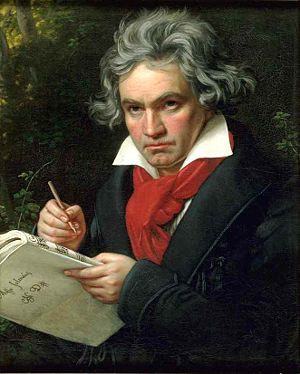

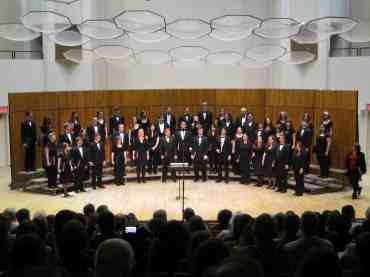
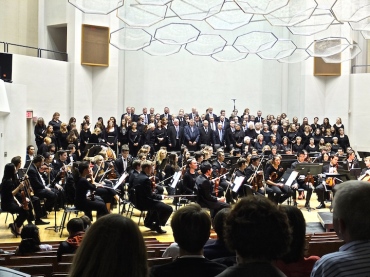
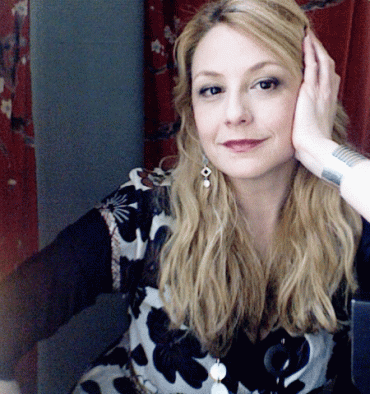
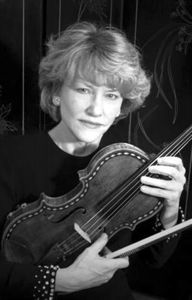
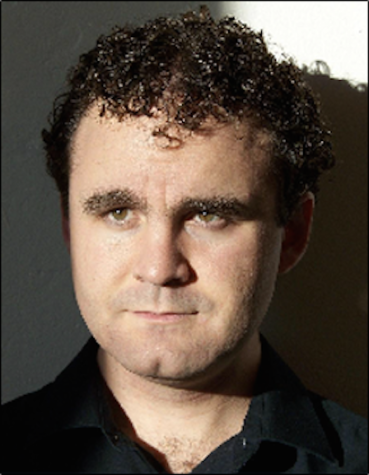
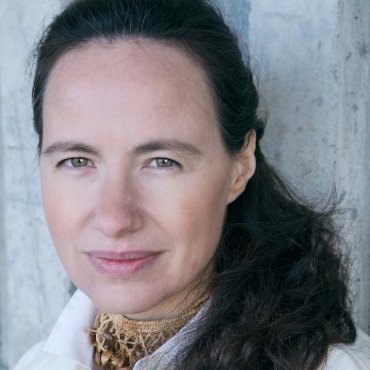
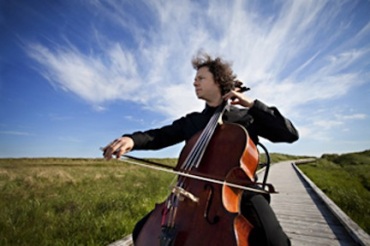
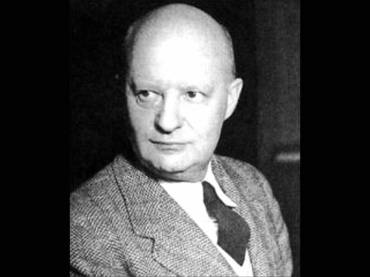
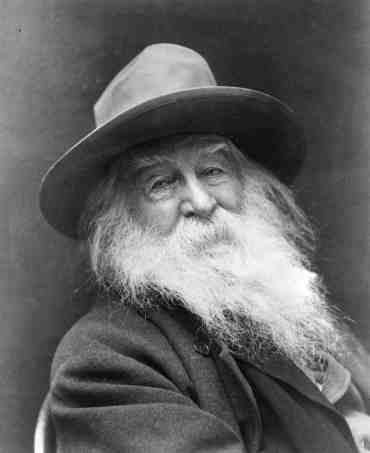
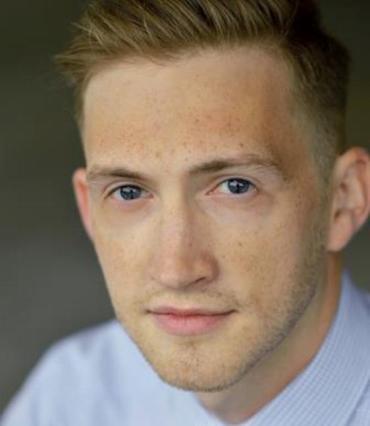
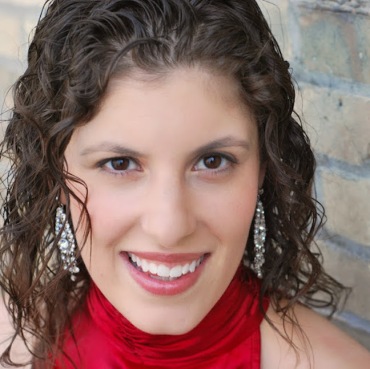



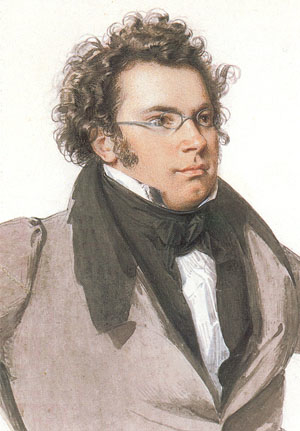








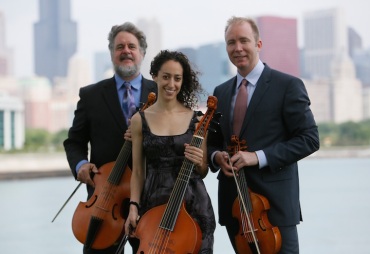







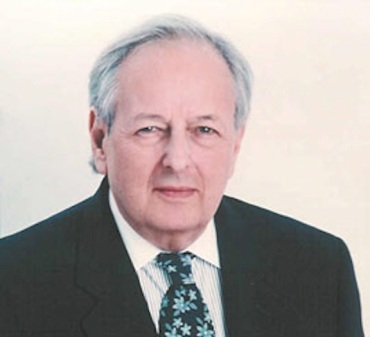





Classical music: What will the fall concert season will look like? And what will the post-pandemic concert world be like?
3 Comments
PLEASE HELP THE EAR. IF YOU LIKE A CERTAIN BLOG POST, SPREAD THE WORD. FORWARD A LINK TO IT OR, SHARE IT or TAG IT (not just “Like” it) ON FACEBOOK. Performers can use the extra exposure to draw potential audience members to an event. And you might even attract new readers and subscribers to the blog.
By Jacob Stockinger
This past week, The Ear listened to and read a lot of news about COVID-19 and the arts.
And it got him thinking: What will happen this fall with the new concert season? And even later, what will a post-pandemic concert world look like? (Below is the Madison Symphony Orchestra in a photo by Peter Rodgers.)
As you may have heard, the Tanglewood Festival, the summer home of the Boston Symphony Orchestra, has been canceled this year. So too has the Ravinia Festival, the summer home of the Chicago Symphony Orchestra.
Locally, American Players Theatre in Spring Green also just canceled its summer season.
So far, the summer season seems to be one big cancellation for the performing arts.
True, there are some exceptions.
The Token Creek Chamber Music Festival has yet to announce its plans for August.
One also has to wonder if crowds of up to 20,000 will feel safe enough to attend the Concerts on the Square (below), now postponed until late July and August, by the Wisconsin Chamber Orchestra?
Will people still want to attend the postponed Handel Aria Competition on Aug. 21 in Collins Recital Hall at the UW-Madison’s new Hamel Music Center, assuming the hall is open?
Fall events seem increasingly in question.
Last night on CBS’ “60 Minutes,” Jerome Powell, chairman of the Federal Reserve, said that sports events and concerts will be among the last mass gatherings to take place safely, probably not until next spring or summer or even later, depending on when a vaccine becomes available.
Some public health experts also offer dire predictions about how easing up lockdown restrictions too soon might lead to an even worse second wave of the coronavirus virus pandemic this autumn and winter, despite all the happy talk and blame-shifting by Team Trump.
So, what do you think will happen beyond summer?
The Ear wonders what the fallout will be from so many music groups and opera companies turning to free online performances by solo artists, symphony orchestras and chamber music ensembles.
Will season-opening concerts be canceled or postponed? What should they be? Will you go if they are held?
Will at-home listening and viewing become more popular than before?
Will the advances that were made in using streaming and online technology (below) during the lockdown be incorporated by local groups — the UW-Madison especially comes to mind — or expected by audiences?
In short, what will concert life be like post-pandemic and especially until a vaccine is widely available and a large part of the population feels safe, especially the older at-risk audiences that attend classical music events?
Will larger groups such as symphony orchestras follow the example of the downsized Berlin Philharmonic (below, in a photo from a review by The New York Times) and play to an empty hall with a much smaller group of players, and then stream it?
Will some free streaming sites move to requiring payment as they become more popular?
Live concerts will always remain special. But will subscriptions sales decline because audiences have become more used to free online performances at home?
Will most fall concerts be canceled? Both on stage and in the audience, it seems pretty hard to maintain social distancing (below is a full concert by the Madison Symphony Orchestra). Does that mean the health of both performers – especially orchestras and choral groups – and audiences will be put in jeopardy? Will the threat of illness keep audiences away?
Even when it becomes safe to attend mass gatherings, will ticket prices fall to lure back listeners?
Will programs feature more familiar and reassuring repertoire to potential audiences who have gone for months without attending live concerts?
Will expenses be kept down and budgets cut so that less money is lost in case of cancellation? Will chamber music be more popular? (Below is the UW-Madison’s Pro Arte Quartet during its suspended Beethoven cycle.)
Will fewer players be used to hold down labor costs?
Will imported and expensive guest artists be booked less frequently so that cancellations are less complicated to do?
Will many guest artists, like much of the public, refrain from flying until it is safer and more flights are available? Will they back out of concerts?
Will all these changes leave more concert programs to be canceled or at least changed?
There are so many possibilities.
Maybe you can think of more.
And maybe you have answers, preferences or at least intuitions about some the questions asked above?
What do you think will happen during the fall and after the pandemic?
What do you intend to do?
Please leave word, with any pertinent music or news link, in the comment section.
The Ear wants to hear.
Share this:
Tags: #60Minutes, #AirTravel, #AmericanPlayersTheatre, #BeethovenStringQuartets, #BerlinPhilharmonic, #BlogPost, #BlogPosting, #BostonSymphony, #BudgetCuts, #ChamberMusic, #ChicagoSymphonyOrchestra, #ChoralMusic, #CollinsRecitalHall, #ConcertHall, #ConcertSeason, #ConcertsontheSquare, #COVID-19, #DonaldJ.Trump, #DonaldTrump, #FacebookPost, #FacebookPosting, #FederalReserve, #GeorgeFridericHandel, #GuestArtist, #HamelMusicCenter, #HandelAriaCompetition, #HappyTalk, #HighTechnology, #HomeWebsite, #JacobStockinger, #JeromePowell, #LaborCosts, #LastNight, #LiveMusic, #LiveStreaming, #LudwigVanBeethoven, #MadisonSymphonyChorus, #MadisonSymphonyOrchestra, #MassGathering, #MeadWitterSchoolofMusic, #MusicReview, #NewYorkTimes, #PerformingArts, #PresidentDonaldTrump, #PresidentTrump, #ProArteQuartet, #PublicHealth, #RaviniaFestival, #SecondWave, #shelter-at-home, #SixtyMinutes, #SocialDistance, #SocialDistancing, #SpringGreen, #Stayathome, #StringQuartet, #SymphonyOrchestra, #TanglewoodFestival, #TheEar, #TokenCreekChamberMusicFestival, #TokenCreekFestival, #UniversityofWisconsin-Madison, #WisconsinChamberOrchestra, #YouTubevideo, 60 Minutes, air travel, American Players Theatre, answer, aria, artists, Arts, at home, at-risk, attend, audience, August, Autumn, Beethoven, Berlin Philharmonic, Berlin Philharmonic Orchestra, blame, blog, Book, Boston Symphony, Boston Symphony Orchestra, budget, budget cuts, cancel, cancellation, CBS, CBS-TV, chairman, Chamber music, Chicago, Chicago Symphony Orchestra, choral music, Classical music, Collins Recital Hall, comment, Competition, complicated, composer, Concert, concert hall, concert season, Concerts on the Square, coronavirus, cost, costs, do, Donald J. Trump, downsize, empty, ensemble, event, expense, expensive, Facebook, fall, fallout, familiar, Federal Reserve, flight, fly, forward, free, George Frideric Handel, guest artist, Hamel Music Center, Handel, Handel Aria Competition, happy talk, happy', Health, Home, illness, imported, intend, intuition, Jacob Stockinger, jeopardy, Jerome Powell, July, labor, labor costs, large, last night, like, link, listener, live music, lockdown, Ludwig van Beethoven, lure, Madison, Madison Symphony Chorus, Madison Symphony Orchestra, mass, mass gathering, Mead Witter School of Music, MSO, Music, music review, new, New York Times, news, older, online, opera, Orchestra, pandemic, PAQ, part, past, payment, performer, Performing arts, pertinent, photo, Piano, players, popular, population, post, posting, postpone, postponement, preference, President Trump, price, pro arte hamel, Pro Arte Quartet, Public health, question, Ravinia Festival, read, reassuring, relevant, repertoire, repertory, require, restrictions, safe, safely, Season, second wave, section, share, shift, site, Sixty Minutes, social distance, social distancing, solo, Sports, Spring Green, Spring Green Wisconsin, stage, sting quartet, stream, streaming, subscriber, subscription, summer, suspend, symphony, tag, talk, Tanglewood Festival, team, technology, Television, The Ear, think, threat, ticket, Token Creek Chamber Music Festival, Trump, TV, United States, University of Wisconsin-Madison School of Music, University of Wisconsin–Madison, UW, UW-Madison, Violin, vocal music, Website, week, winter, Wisconsin, Wisconsin Chamber Orchestra, wonder, world, YouTube